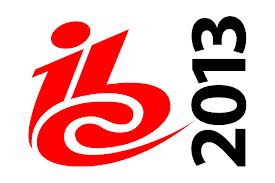
Although OTT has been an IBC topic for a few years, we actually saw a plethora of end-to-end platforms that actually worked, often purely in the cloud. The range of supplier was impressive from Israeli start-ups like Vidmind to multinationals like Siemens or the pioneer Kit digital, now reprendre Piksel. There was also much more talk of real world deployments. Underlying technologies are of course needed to enable OTT and adaptive bit rate (ABR) was omnipresent with most - but not all - stakeholders betting on the convergent MPEG-DASH flavour. OTT ecosystems can still be daunting and as we predicted in last year's white paper written for VO, Broadpeak and Harmonic, multi-vendor pre-integration was a trending theme. This year's IBC was, as expected, all about the forthcoming Ultra HD/4K resolution, which will now be enabled by the new HDMI 2.0 announced at IFA and HEVC. HEVC was shown in a few real world setups as oppose to last year's lab demos, although there wasn’t yet any consumer-grade decoding solutions. Many demos painfully showed that frame-rate is an issue as Thierry Fautier pointed out to me here. The jerky 25 FPS demos clearly made the point that it's going to be at least 50 FPS or higher resolutions just won't take off. The 8K, Super Hi-Vision demo by NHK in the IBC's future zone blew my mind. With such an immersive experience, I doubt we’ll be wasting any more time with 3D in the living room. Although less prominent, but nevertheless significant, like the tip of an iceberg, the Smart Home continued its slow forward march with for example a demo of Cisco's Snowflake that dimmed the lights during a movie's night scenes. Several vendors like ADB or Nagra were talking about media hubs in the home. Big data was in a lot of discussions and I was pretty amazed by the power of solutions like Genius Digital's analysis of viewing statistics and how they can being immediate gain. Of course I too loved Wyplay's huge blue frog in hall 5, representing their new open source initiative, which needs to be analysed in the light of the US centric RDK project pushed by Comcast. As every year, I spent some time with a company slightly out of my usual focus, this year Livewire Digital showed me how professional newsgathering can meet BYOD. Some things I had expected (described here), but didn't see much of, included HTML5 that wasn't promoted as the mother of all UI technologies as I thought it would be. Also, despite Google’s recent successful Chromecast launch, dongles were not really visible at IBC (I’m told Qualcomm had one on their booth). Finally, it occurs to me tidying up my notes, that the true implication of the BYOD phenomenon hasn’t really been addressed head-on. Of course the show and conference were full of things to say about tablets and smartphones, but nobody seems to be looking at the deep business model transformation underway. When I learnt to do a TV launch business model, barely over a decade ago, the STB represented 70% of the project CAPEX if you hit a million subs. So in the future will a TV rollout cost 30% of what it used to, with the subscriber subsidising the operator for the other 70%? This is about my tenth IBC. In the jury for best booth, to which I was invited again this year (thanks Robin Lince), we realised that as IBC matures in the age of Internet and social media, the show is less about learning what the latest trend or product is or even what people think about them, we usually know all that before even coming. Face to face networking and building relations are the deeper motivation. In follow-up posts I’ll report on the 17 companies I spoke to this year at IBC: Brightcove, Envivio, Axinom, Visiware, Vidmind, Wyplay, Genius Digital, Astec, Axentra, Gravity, Akamai, Rovi, Cisco, Livewire Digital, Tara Systems, Verimatrix and SofAtHome.

You must log in to post a comment.